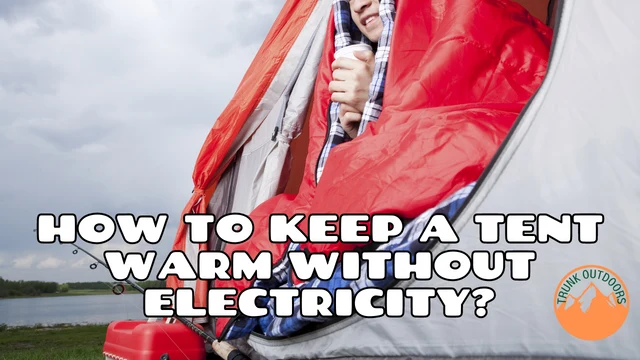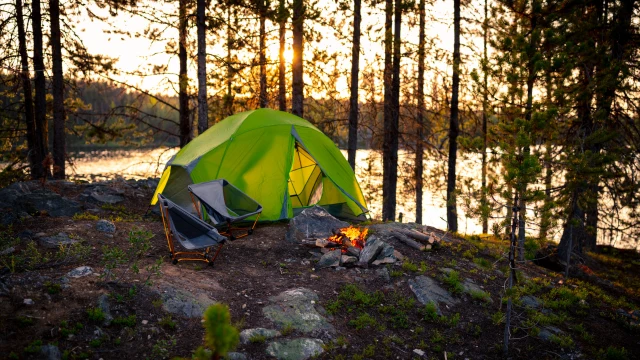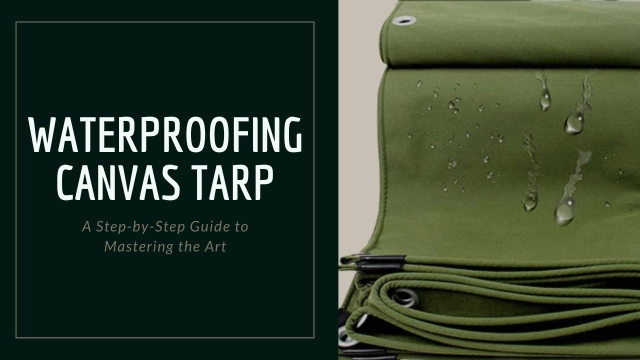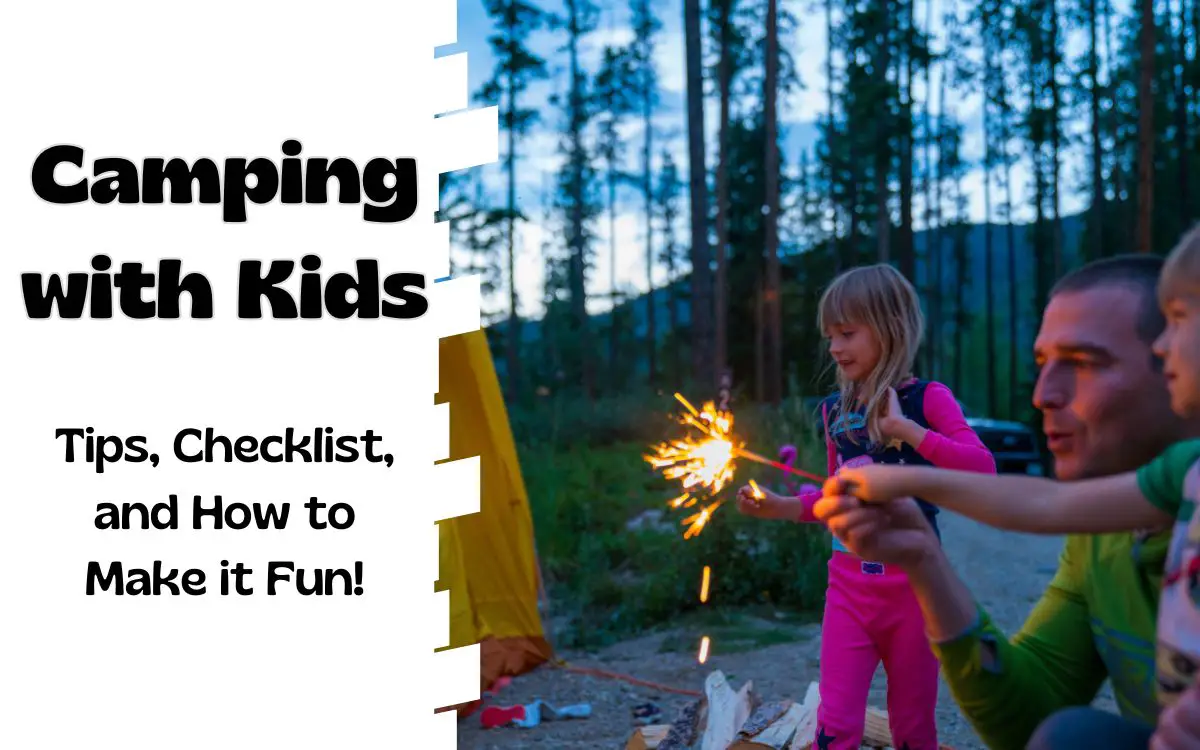Mastering Winter Nights: 10 Ways to Heat a Tent Without Electricity

Camping is awesome, but brrr! Getting cold at night can be no fun! In this guide I’ll show you how to heat a tent without electricity with easy ways, so you can sleep tight and enjoy the adventure, no matter the temperature!
Here are the 10 easy ways that I used during my camping trip in the winter to heat a tent without electricity:
- Portable Wood Stove
- Propane Heaters
- Hot Water Bottles
- Insulate Your Tent
- DIY Candle Lantern Heater
- Layer Up
- Hot Rocks
- Reflective Tarps
- Body Heat
- Hot Tent

How To Heat A Tent Without Electricity
1. Portable Wood Stove
Investing in a portable wood stove is a game-changer for cold-weather camping, and the DANCHEL OUTDOOR T6 Pure Titanium Tent Wood Stove Camping stands out as an excellent choice.
Crafted from durable titanium, this stove is lightweight, making it easy to carry on your outdoor adventures.
The compact design is specially tailored for tent use, fitting snugly inside most tents to provide an efficient heating solution.
Be sure to use them with the appropriate ventilation system to prevent carbon monoxide buildup.
2. reflective tarp camping
Utilize reflective tarps to bounce heat back into your tent. Place them strategically outside your tent to capture and amplify sunlight during the day.
At night, these tarps can reflect the heat generated by your body back into the tent.
3. Hot Tents
Hot tents, also known as canvas stove tents. These specially designed tents are made for housing a wood stove inside, creating a warm and inviting haven.
They offer:
- Unique experience: Enjoy the crackling ambiance of a campfire while staying warm and dry.
- Spaciousness: Often larger than traditional tents, providing ample room for socializing or gear storage.
- Durability: Canvas construction withstands harsh weather conditions effectively.
Hot tents come in various sizes and styles, catering to solo adventurers and groups alike.
So, ensure your chosen tent is compatible with the size and type of stove you plan to use. Practice setting up and operating the stove before your trip to avoid fumbling in the cold.
4. Propane Heaters
Embrace the convenience and consistent warmth of a propane heater. These compact wonders pack a punch, radiating heat efficiently and keeping your tent toasty.
They offer:
- Intense heat: Quickly warm up even large tents with adjustable temperature settings.
- Convenience: Easy to operate and refuel with readily available canisters.
- Versatility: Some models can be used for cooking or boiling water.
Choose from various models, like catalytic heaters that burn silently and require no electricity, or convection heaters that offer faster heat distribution.
5. Hot Water Bottles
Simple yet effective, hot water bottles can provide localized warmth inside your sleeping bag.
Boil water on your camp stove, fill a durable bottle, and secure it in your sleeping bag.
This DIY heating solution is a budget-friendly way to ensure a toasty night’s sleep.
You may also like: How To keep a Tent Cool Without Electricity
6. Insulate Your Tent
Before the temperature dips, take proactive steps to turn your tent into a heat haven. Consider these two key strategies:
MSR Gear experts said that the 4-season tents are designed to withstand harsh weather and retain heat effectively. Look for features like double-wall construction, a well-insulated floor, and adequate ventilation ports that prevent condensation while trapping warmth.
The MSR Access Mountaineering Tent is a great example, offering excellent insulation and breathability.
- Thermal blankets: These reflective sheets, often made of emergency blankets or space blankets, work by trapping your body heat and reflecting it back into the tent. Hang them on the inside walls of your tent, creating a barrier against the cold air outside. You can also use them to create a warm “nest” around your sleeping bag.
- Tent floor covering: A thick, insulated tent floor significantly reduces heat loss through the ground. Consider using additional insulation like foam mats, sleeping pads, or even layers of blankets to create a buffer between you and the cold earth. This will keep your feet warm and prevent heat from escaping downwards.
By combining a well-built tent with smart layering of thermal blankets and tent floor insulation, you can effectively transform your tent into a cozy cocoon, ready to conquer even the chilliest nights.
7. DIY Candle Lantern Heater
Create your own makeshift heater using a candle lantern. Place a few candles inside the lantern and hang it securely in the tent.
Ensure proper ventilation and never leave it unattended. This DIY solution provides gentle warmth and ambient light.
8. Layer Up
Your choice of clothing plays a crucial role in staying warm. Layering traps heat effectively, so pack thermal underwear, fleece, and a good-quality winter jacket.
Don’t forget warm socks, a hat, and gloves to keep extremities cozy. Read how to dress for winter camping.
9. Hot Rocks
If you have access to a campfire, heat rocks for 20-30 minutes in the hottest part of your campfire to ensure deep heat penetration.
Once heated, use fireproof cloth or a metal container to transport the rocks to your tent and protect your belongings.
Place them near your feet or core for targeted warmth. Don’t put them directly on your sleeping bag to avoid scorching.
These rocks stay warm for a long time and can radiate warmth throughout the night, creating a natural and rustic heating solution.
But not all rocks are created equal! To maximize your heat-holding potential, choose wisely from these champions of thermal retention:
- Basalt: This volcanic rock is a superstar when it comes to storing heat. Its dense, fine-grained structure traps warmth like a champ, radiating it steadily for hours. Imagine snuggling up next to a smooth, basalt boulder radiating warmth like a miniature sun.
- Granite: Another powerhouse, granite’s dense crystals and low porosity make it a heat storage superhero. Look for smooth, rounded boulders ( ) that won’t damage your tent.
- Gneiss: This metamorphic rock, formed from the transformation of other rocks like granite, also boasts excellent heat-retaining properties. Its layered structure further enhances its thermal insulation, making it a great choice for a long night of cozy warmth.
10. Body Heat
The oldest trick in the book, snuggling up with a tent mate can generate considerable warmth. Ensure you have suitable sleeping bags and share body heat responsibly.
safety Tips
- Practice fire safety at all times, especially when using open flames or portable stoves.
- Check the weather forecast and plan accordingly. Knowing what to expect allows you to prepare for the specific challenges of the upcoming night.
- Keep ventilation in mind. While trapping heat is essential, ensuring a fresh air supply is equally crucial to prevent condensation and maintain air quality.
Related: 13 Essential Campsite Safety Tips
how to heat a tent without electricity? Final Word
Heating a tent in winter without electricity can be challenging, but with the right equipment and preparation, you can stay warm and cozy throughout the night.
Choosing the right tent, insulating your tent, using a cold-weather sleeping bag, heat-generating accessories, and cooking meals inside the tent are some helpful tips and tricks to stay warm and comfortable during cold nights while camping.
By following these strategies on how to heat a tent without electricity, you can ensure a comfortable and enjoyable camping experience even in chilly conditions.






